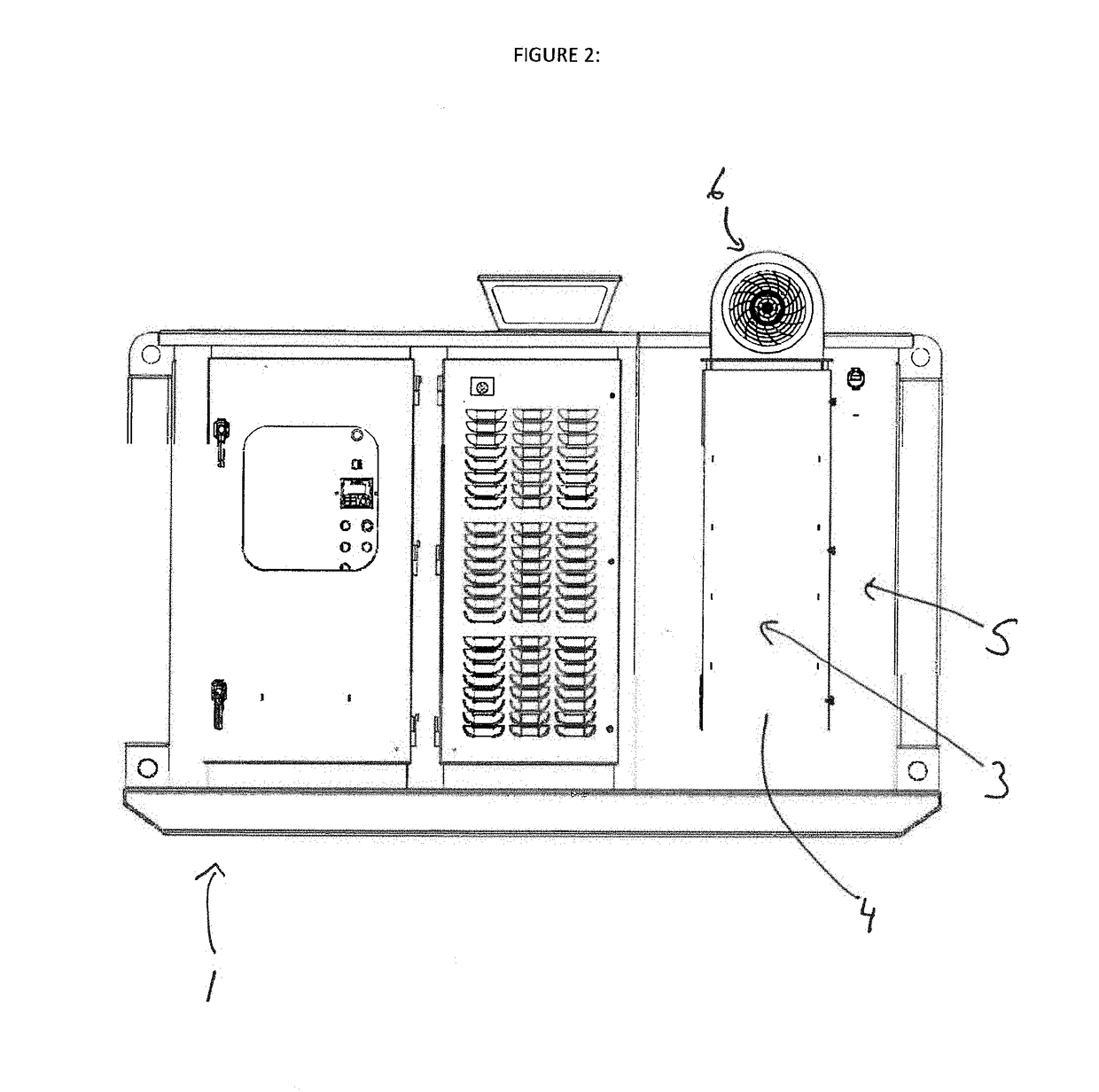Compartmentalized heat exchanger in industrial component system
a heat exchanger and industrial component technology, applied in the field of industrial equipment, can solve the problems of degrading the performance of electrical components, increasing the temperature of the assembly, and generating significant amounts of heat, so as to reduce the heat within the primary compartment, effectively maintain the component, and reduce the operation of the heat generating industrial component
- Summary
- Abstract
- Description
- Claims
- Application Information
AI Technical Summary
Benefits of technology
Problems solved by technology
Method used
Image
Examples
Embodiment Construction
[0024]As outlined above, the present invention relates to a novel compartmentalized heat exchanger in a heat producing industrial component system. Various types of industrial component systems would include heat producing industrial components, such as an electric drive, variable frequency drive or VFD, or any other type of a mechanical or electrical component which generates heat in operation. Some heat producing industrial components might be cooled by providing a flow of a cooling media that contacts the surface of the heat exchanger. The cooling media may be fluid, where others, which are the focus of the present invention, where one or more vane heat exchangers or heat sinks attached to the surface thereof are cooled by a flow of air as the cooling medium. A plurality of vanes on the heat exchanger allows for increased efficiency in the dissipation of heat from the operation of the component into the surrounding environment.
[0025]The at least one heat producing industrial comp...
PUM
| Property | Measurement | Unit |
|---|---|---|
| temperature | aaaaa | aaaaa |
| temperature | aaaaa | aaaaa |
| temperature | aaaaa | aaaaa |
Abstract
Description
Claims
Application Information
 Login to View More
Login to View More - R&D
- Intellectual Property
- Life Sciences
- Materials
- Tech Scout
- Unparalleled Data Quality
- Higher Quality Content
- 60% Fewer Hallucinations
Browse by: Latest US Patents, China's latest patents, Technical Efficacy Thesaurus, Application Domain, Technology Topic, Popular Technical Reports.
© 2025 PatSnap. All rights reserved.Legal|Privacy policy|Modern Slavery Act Transparency Statement|Sitemap|About US| Contact US: help@patsnap.com



